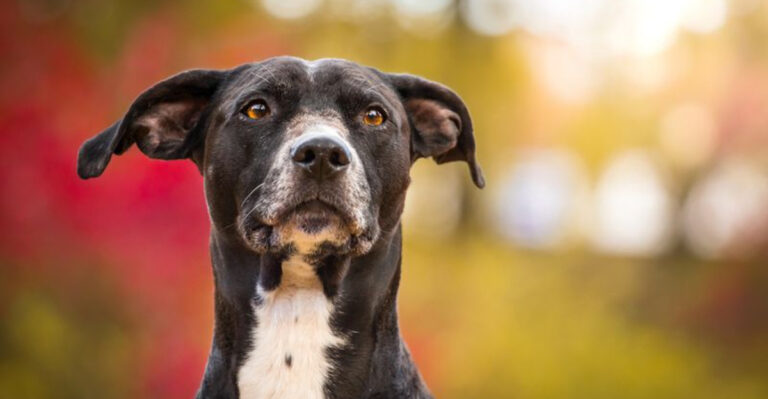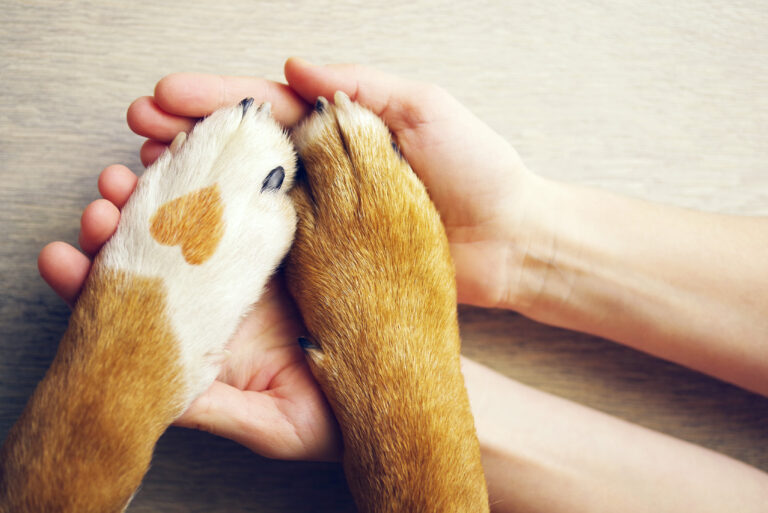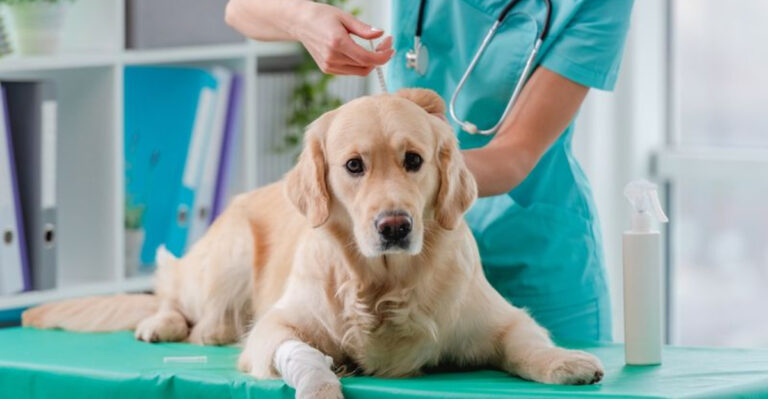24 Things You Should Never Do When Leaving Your Dog Alone

Leaving your furry friend home alone can be stressful for both of you. Dogs are social creatures who crave companionship, and how you handle departures can significantly impact their wellbeing.
Whether you’re stepping out for an hour or heading to work for the day, avoiding these common mistakes will help keep your pup safe, comfortable, and happy while you’re away.
1. Leave Food Out All Day
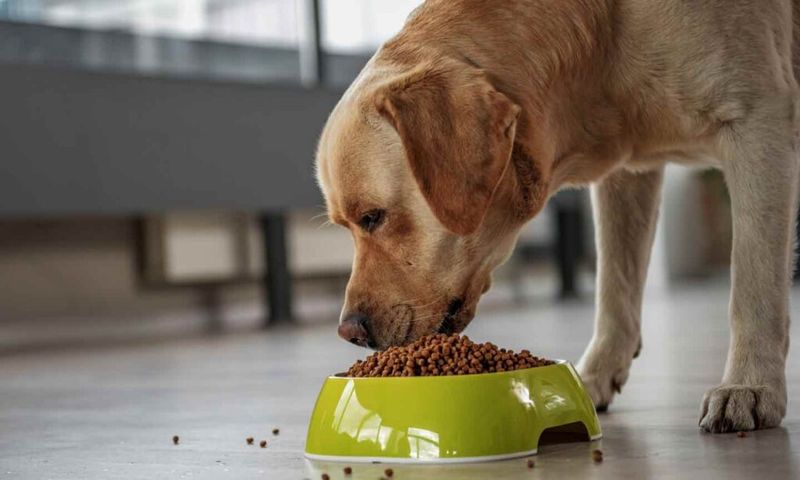
Free-feeding leads to obesity and can attract pests into your home. Many dogs gulp down unattended food too quickly, risking dangerous bloat.
Instead, feed your pup before you leave and remove the bowl. For longer absences, consider timed feeders that dispense pre-measured portions at scheduled intervals.
2. Keep Tight Collars On
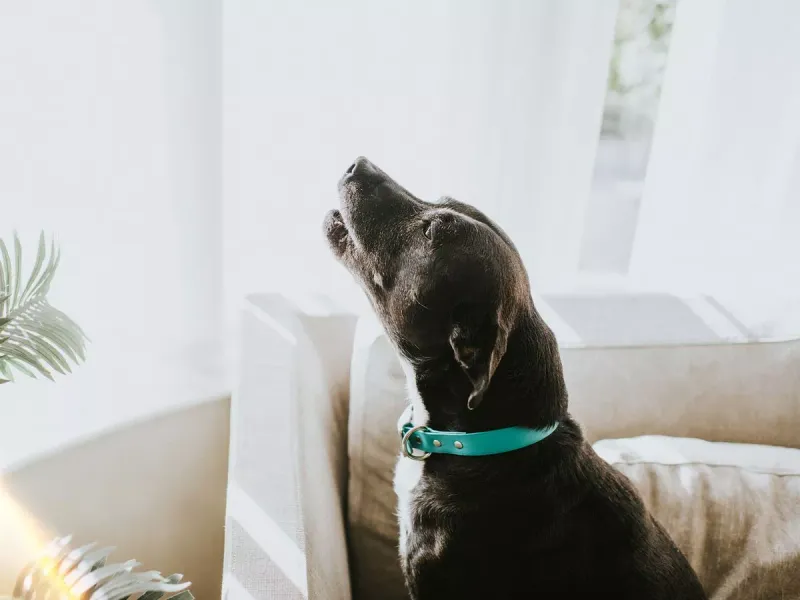
Collars can snag on furniture, fencing, or crate bars while you’re gone, potentially choking your dog or causing injury. Even regular collars can become dangerous without supervision.
Remove collars before leaving, especially if your dog stays in a crate. For identification, ensure your pet is microchipped as a permanent safety backup.
3. Allow Access To Toxic Plants
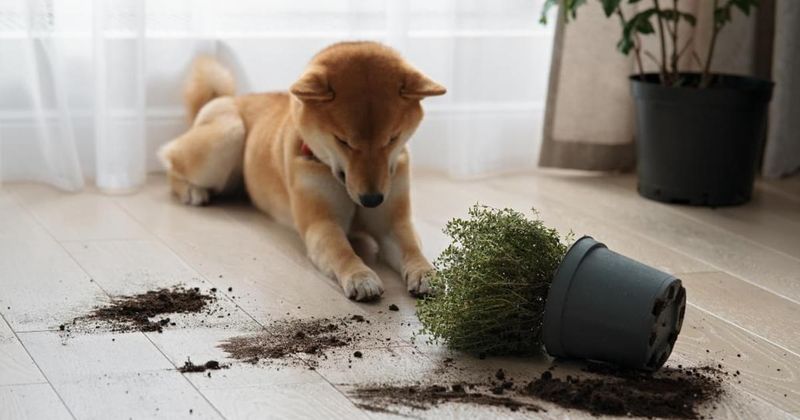
Bored dogs might chew on houseplants to pass time. Many common varieties like lilies, aloe vera, and pothos are toxic to canines.
Move plants to inaccessible areas or hang them from the ceiling. Curious pups with nothing to do will investigate anything interesting, and plant poisoning requires immediate veterinary attention.
4. Skip The Bathroom Break
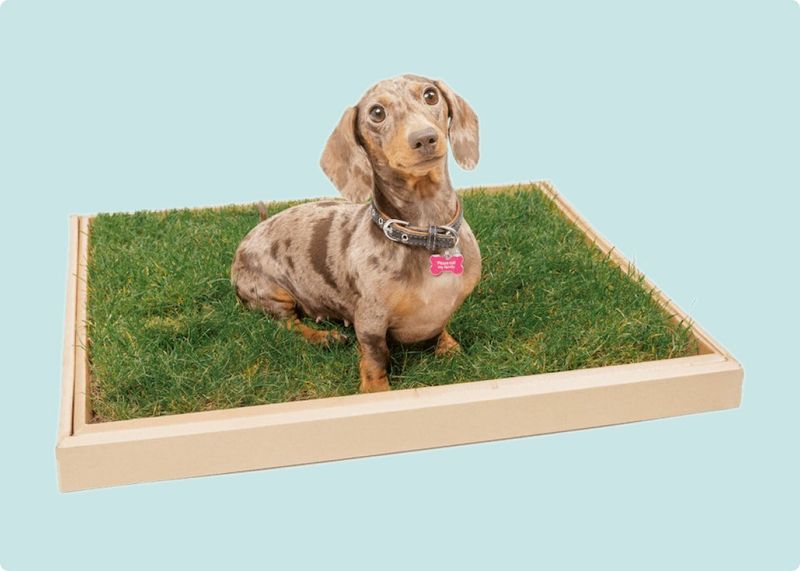
Rushing out without a proper potty opportunity sets your dog up for failure. Even well-trained dogs can’t hold it indefinitely.
Always take your pup for a walk before leaving. For puppies, follow the month-plus-one rule – a three-month-old puppy can only hold it about four hours maximum. Older dogs deserve the same consideration.
5. Turn Off All Lights
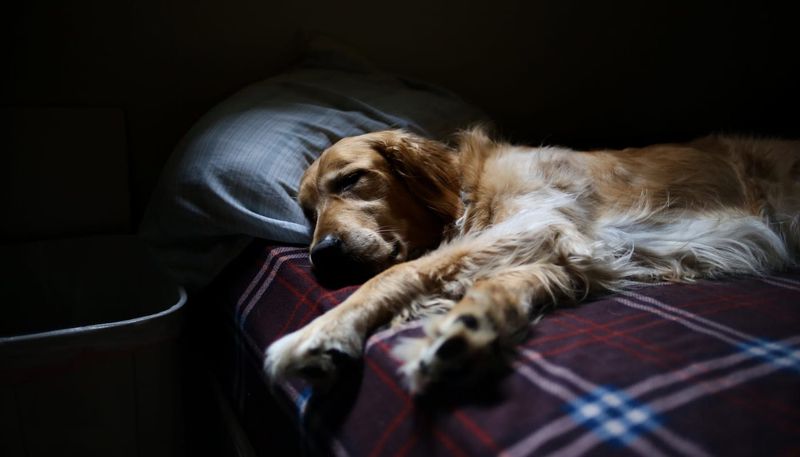
Complete darkness can increase anxiety in many dogs. They can’t tell time and might become disoriented in pitch-black surroundings.
Leave a light on in the main area where your dog stays. Natural light from windows helps too, maintaining normal day-night cycles that keep your dog’s internal clock functioning properly.
6. Forget To Dog-Proof
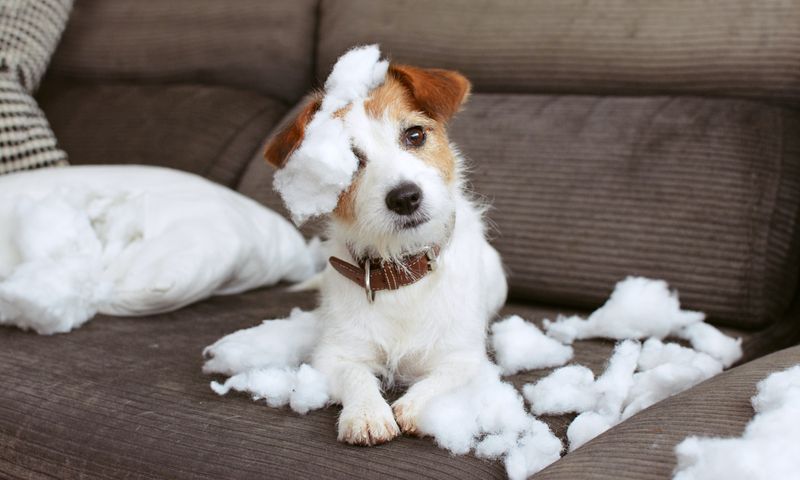
Dogs explore with their mouths when bored. Electrical cords, small objects, and household chemicals become dangerous temptations during alone time.
Take five minutes to scan for hazards at dog level. Put away medications, secure trash cans, and block access to risky areas. Remember that determined dogs can jump onto counters and open cabinets.
7. Play Loud Music
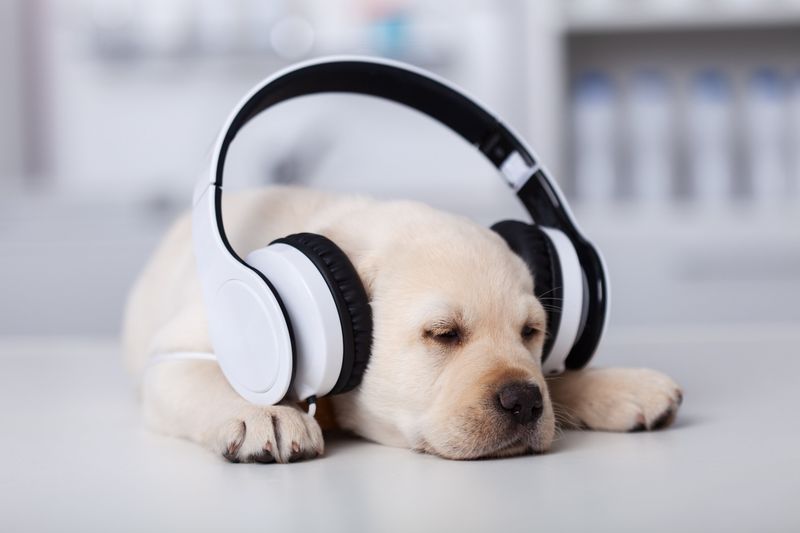
Dogs have sensitive hearing – much more acute than humans. Blasting music or TV at high volume can cause stress and hearing damage over time.
If you leave background noise, keep it at conversation level. Classical music or specially designed pet relaxation sounds work better than heavy bass or action movies with sudden loud effects.
8. Leave Windows Wide Open
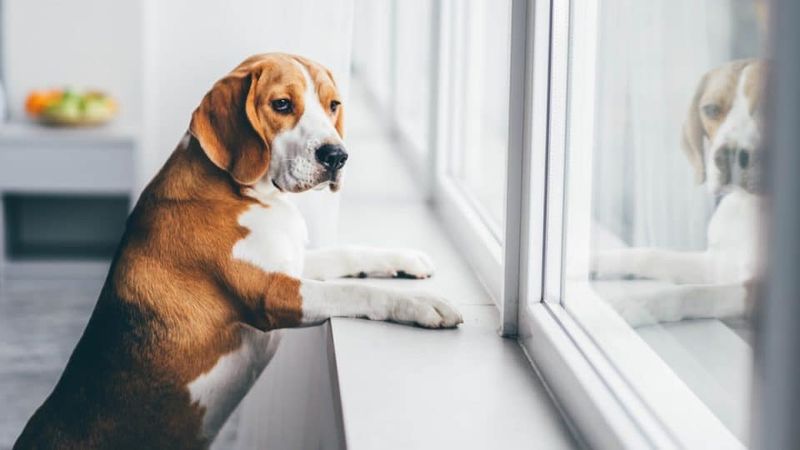
Unsecured windows pose dual dangers – escape routes for determined dogs and falling hazards, especially in apartments. Screen barriers aren’t strong enough to contain a dog who spots a squirrel outside.
Use window locks that allow ventilation while preventing full opening. Consider pet-safe window guards if you need fresh air circulation during your absence.
9. Depart With Emotional Drama
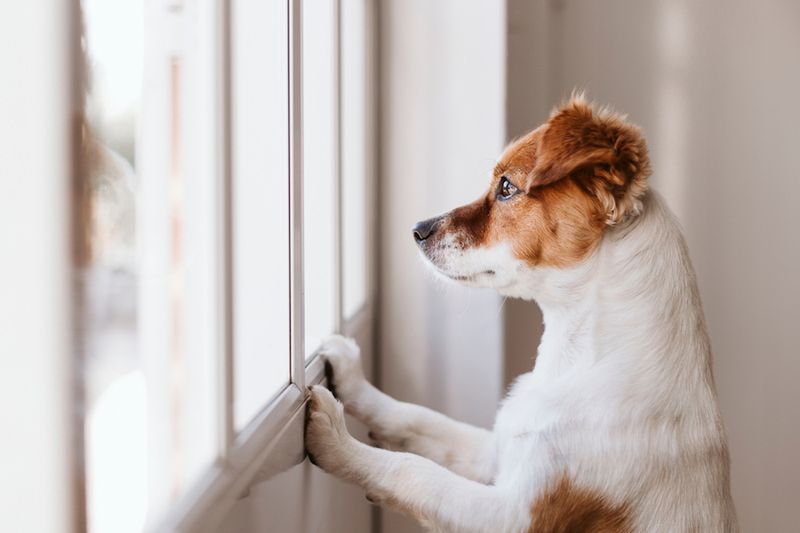
Long, emotional goodbyes signal to your dog that something upsetting is happening. This creates separation anxiety through your own behavior.
Keep departures matter-of-fact and low-key. Start practicing short departures without fanfare. When you actually leave, avoid baby talk, apologies, or excessive affection that unintentionally trains your dog to fear your absence.
10. Skip Exercise Before Leaving
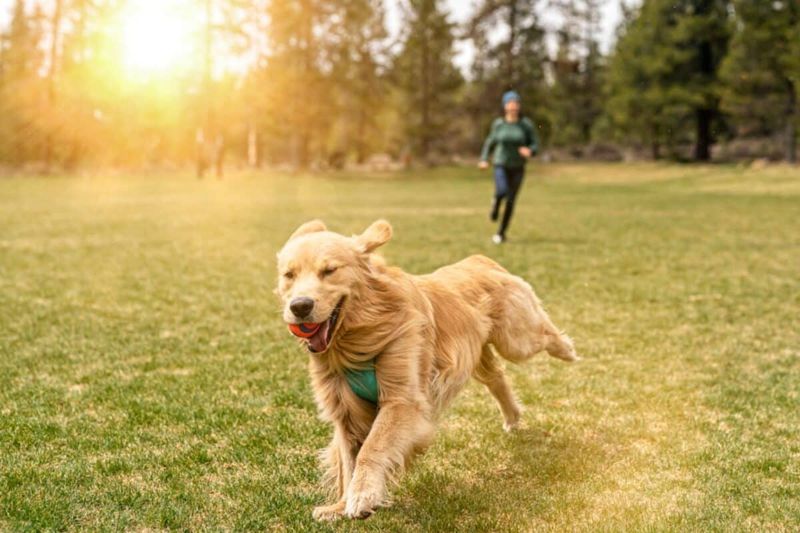
An unexercised dog has pent-up energy that often transforms into destructive behavior. Physical activity is crucial before alone time.
A brisk morning walk or play session helps tire your dog physically and mentally. Aim for at least 30 minutes of activity before departure. A tired dog is much more likely to rest peacefully while you’re gone.
11. Leave Harmful Toys Unsupervised
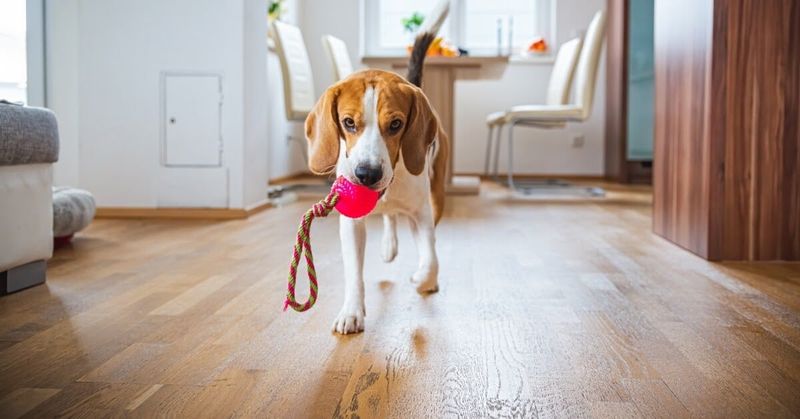
Certain toys safe for supervised play become hazards when you’re away. Rope toys can unravel, causing intestinal blockages if swallowed. Stuffed toys might be torn apart and consumed.
Reserve tough, hollow rubber toys for alone time. Kongs and similar puzzle toys filled with frozen treats provide safe entertainment without small parts or choking risks.
12. Confine In Too-Small Spaces
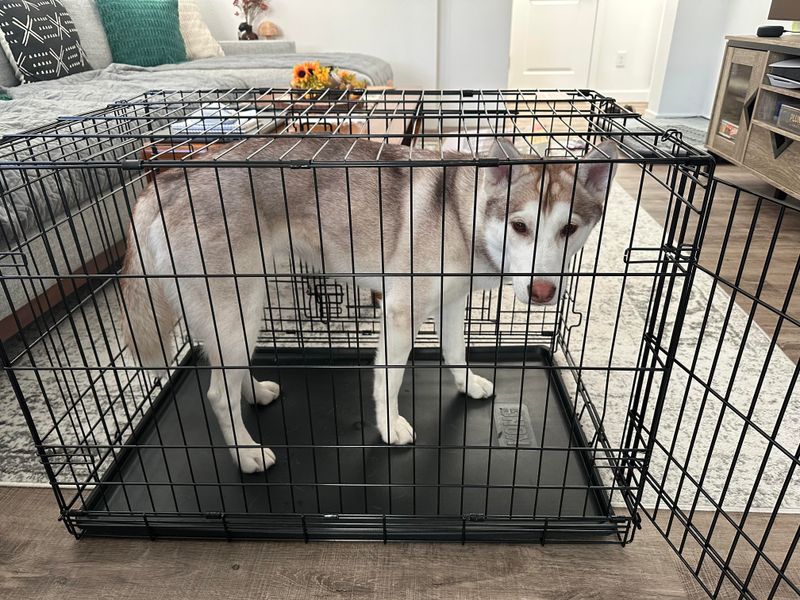
Cramped crates or tiny rooms create physical discomfort and psychological stress. Dogs need space to stand, turn around, and lie down comfortably.
If using a crate, ensure it’s appropriately sized. For room confinement, provide enough space for movement plus separate areas for sleeping, playing, and eliminating if needed. Comfort during confinement prevents anxiety behaviors.
13. Ignore Enrichment Needs
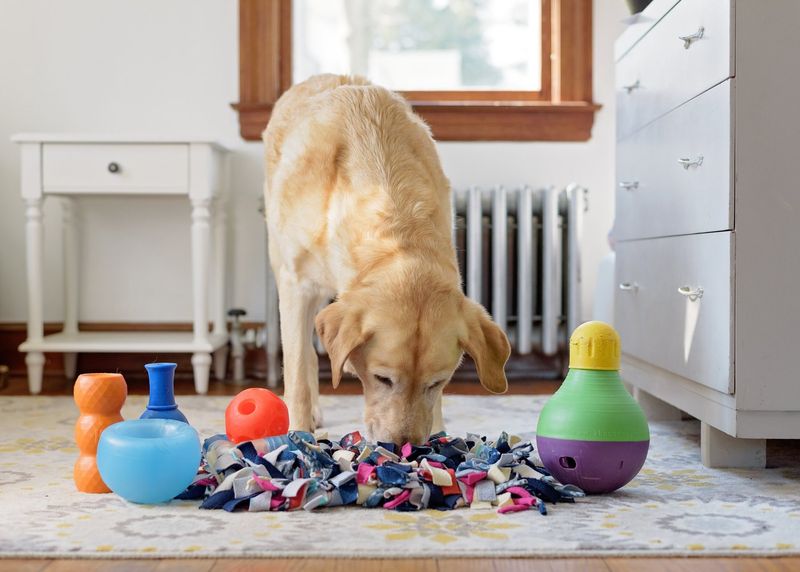
Mental stimulation is as important as physical exercise. Boredom leads to problem behaviors like excessive barking, chewing, or digging.
Set up enrichment stations around your home. Puzzle toys, snuffle mats, or a cardboard box with hidden treats can keep your dog’s mind engaged. Rotate toys regularly to maintain novelty and interest.
14. Rely On Treats For Guilt
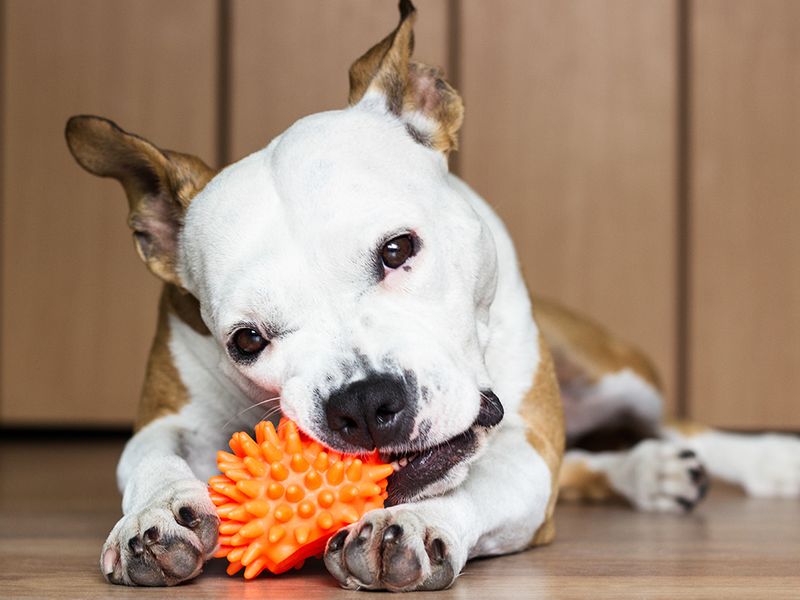
Leaving piles of treats doesn’t compensate for your absence and can lead to unhealthy weight gain. Some dogs might even guard this resource against returning family members.
Focus on quality experiences rather than quantity of snacks. A single long-lasting chew appropriate for your dog’s size is better than handfuls of small treats left around the house.
15. Block Access To Water
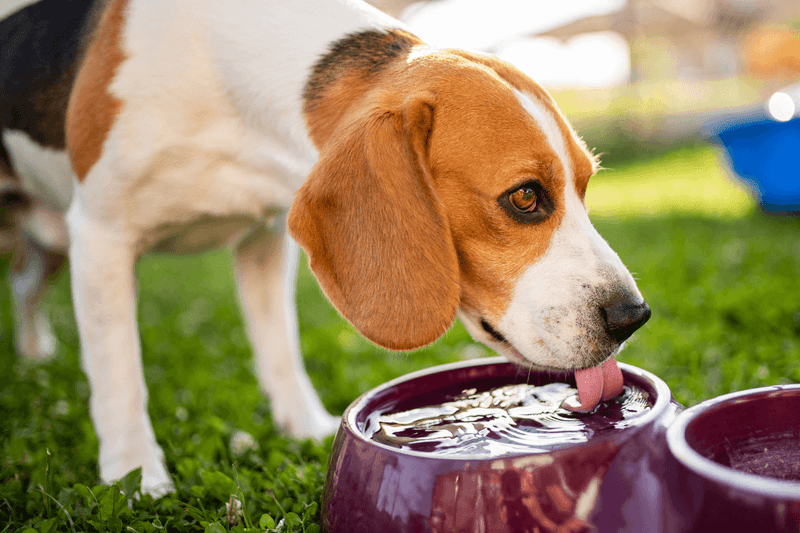
Fresh water is a basic necessity that should never be restricted. Dehydration can occur quickly, especially in warm weather or for active dogs.
Always leave multiple water stations if your dog has access to several rooms. For crated dogs, use spill-proof bowls that attach to the crate. Clean and refill water containers before each departure.
16. Leave Choking Hazards Accessible
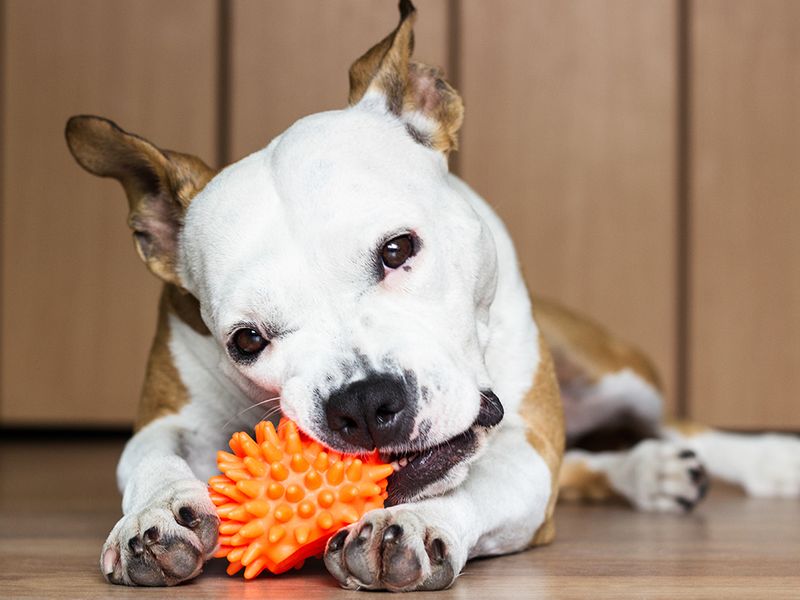
Small objects like children’s toys, rubber bands, or socks become dangerous when swallowed. Without supervision, these emergencies can quickly become life-threatening.
Do a quick floor scan before leaving. Put away anything smaller than your dog’s closed mouth. Be especially vigilant in homes with children where small items frequently end up on floors.
17. Forget To Close Toilet Lids
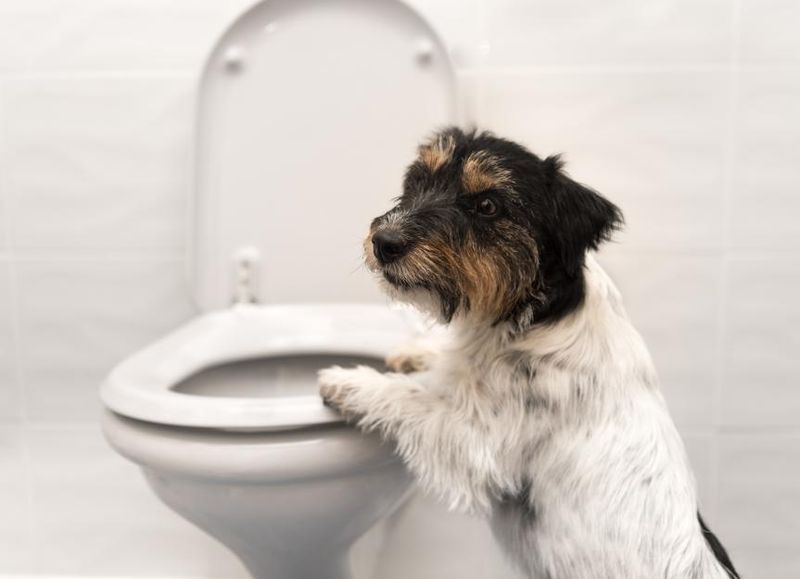
Open toilets present drowning risks for small dogs and expose all dogs to harmful cleaning chemicals. Toilet water contains bacteria that can cause stomach upset.
Make closing toilet lids part of your leaving routine. For persistent toilet-drinkers, consider childproof toilet locks or keeping bathroom doors closed completely when you’re away from home.
18. Ignore Weather Considerations
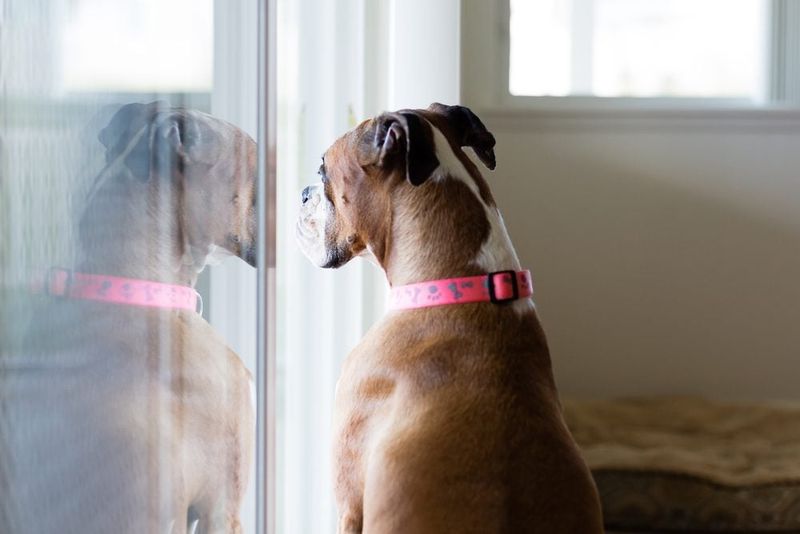
Homes can quickly become dangerously hot or cold without proper temperature control. Dogs can’t remove layers or adjust thermostats themselves.
Set your thermostat appropriately for the season. In summer, never leave without air conditioning if temperatures will rise above 78°F. In winter, ensure the home stays above 65°F for most breeds.
19. Skip The Comfort Item
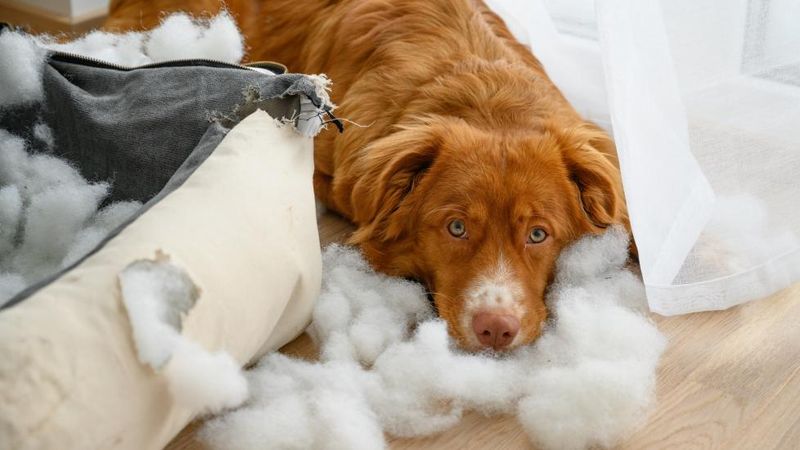
Dogs find security in items carrying your scent. Without familiar comfort objects, anxiety can increase during your absence.
Leave an unwashed t-shirt or blanket with your scent near your dog’s resting area. The familiar smell provides reassurance that you’ll return. Some dogs also benefit from a ticking clock wrapped in fabric to mimic heartbeats.
20. Fail To Secure Trash Cans
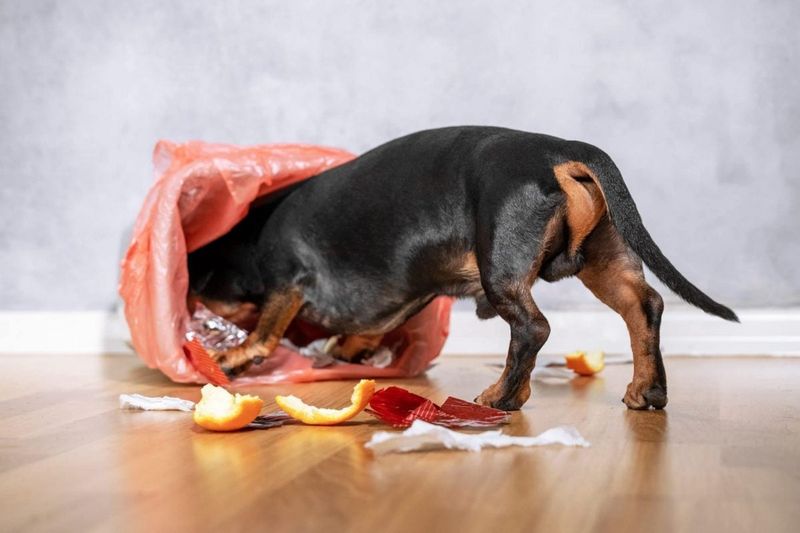
Garbage contains countless hazards from toxic food scraps to sharp can lids. The tempting smells prove irresistible to most dogs left alone with access.
Use dog-proof trash cans with secure lids or place bins inside latched cabinets. For determined trash-raiders, take garbage out before leaving or place bins in inaccessible rooms. Food waste is particularly important to secure.
21. Leave Medications Accessible
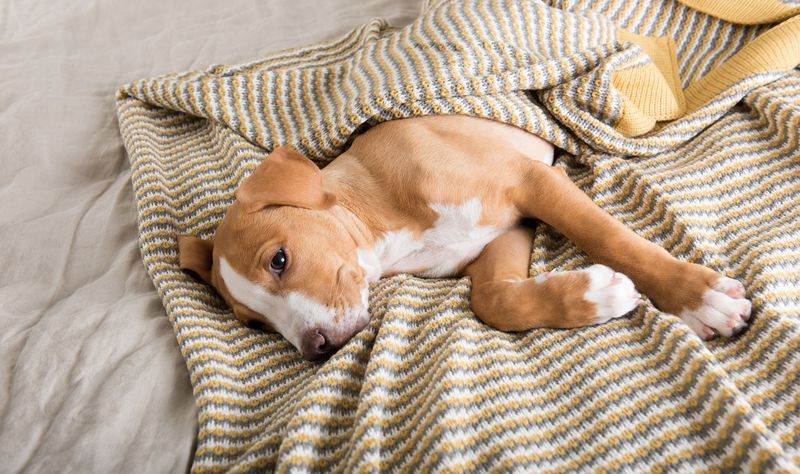
Pills, vitamins, and medications smell interesting to dogs. Even childproof bottles can be chewed through by determined canines with time on their paws.
Store all medications in high cabinets behind closed doors. Never leave pills on countertops or in purses within reach. Both human and pet medications can be lethal if consumed in large quantities.
22. Forget To Close Interior Doors
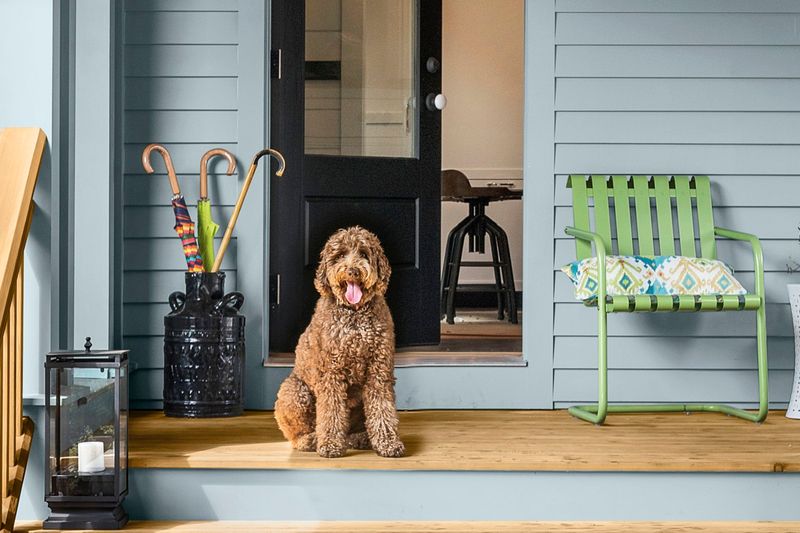
Open doors throughout your home give curious dogs access to trouble spots like laundry rooms with chemicals or offices with electronic equipment.
Limit your dog’s roaming area to pet-proofed spaces only. Close doors to rooms containing valuables or hazards. For doors that must stay open, consider baby gates or pet barriers that allow airflow while restricting access.
23. Leave Without ID Tags
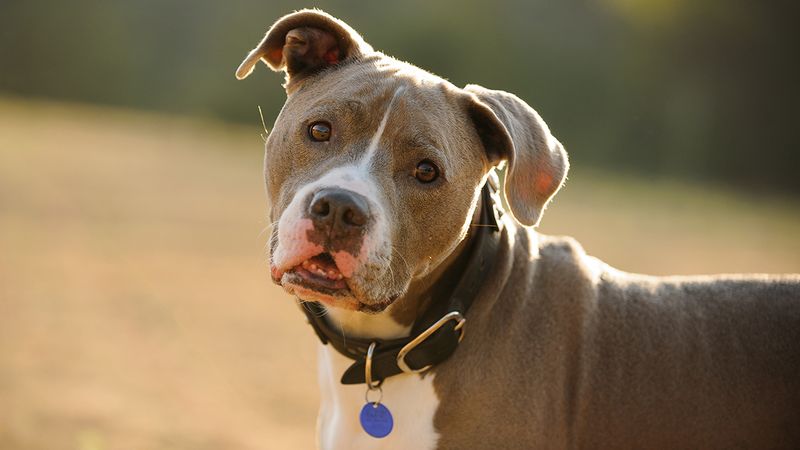
Escapes happen even to careful owners. Without proper identification, a lost dog faces much lower chances of returning home safely.
Always ensure your dog wears current ID tags when alone. Include your cell phone number and consider adding a second contact. Even indoor-only dogs should wear identification in case of emergency evacuations or unexpected escapes.
24. Ignore Stress Signals
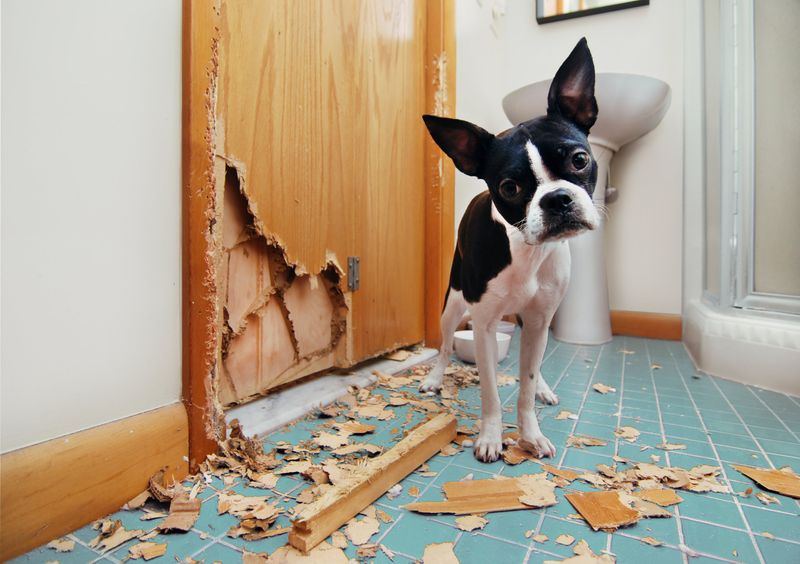
Destructive behavior when alone isn’t naughtiness – it’s often a cry for help. Chewed doorframes, excessive drooling, or accidents signal separation anxiety.
Set up a pet camera to observe your dog’s behavior after you leave. If you notice pacing, whining, or destructive actions, consult your veterinarian. Separation anxiety requires proper treatment, not punishment.


